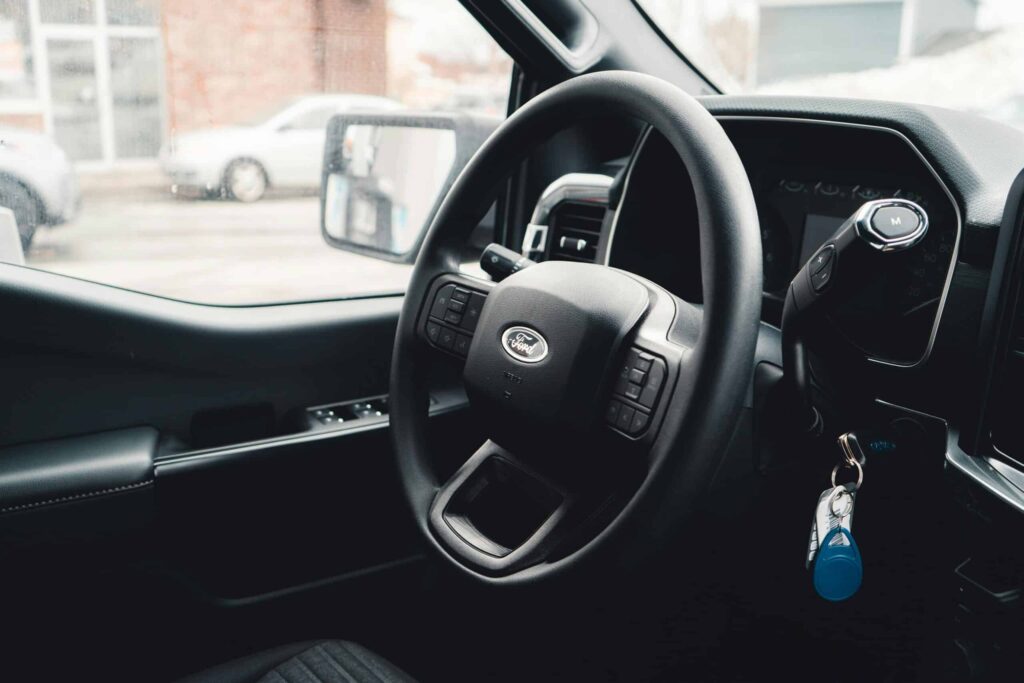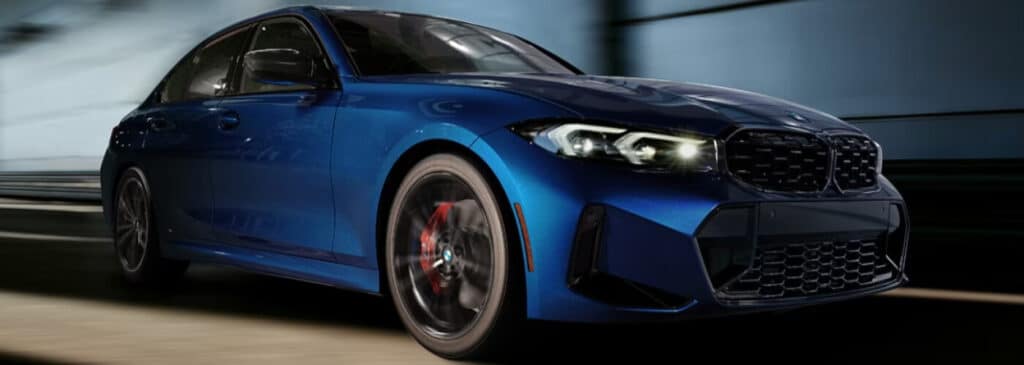Intrigued by the idea of a new car but puzzled by leasing? You’re not alone! Many first-timers find the details murky, making it hard to feel confident about getting a good deal. Exploring various lease-end options can provide significant advantages, enhancing your overall leasing experience. As you approach the end of your lease, it’s time to say goodbye to your leased vehicle and make important decisions about your next steps.
That’s where Cartelligent comes in. Every year, we help thousands of people like you navigate the world of car financing. Our guide is your key to unlocking the secrets of leasing, so you can decide if it’s the right road for you.
Leasing vs. Buying: What’s the Difference?
Think of it this way:
- Buying is for keepers: If you plan to drive the same car for many years and build ownership, buying is usually the way to go.
- Leasing is for the new-car lovers (and budget-conscious in some cases): If you like driving a new car every few years or want a potentially lower monthly payment compared to buying.
While buying and financing are fairly straightforward concepts, leasing can feel like navigating a maze. Many newcomers focus on just the monthly payment or sticker price, which can lead them to miss other crucial factors like upfront costs, interest rates, and hidden incentives. To avoid surprises, it’s essential to calculate potential charges related to excess mileage by understanding the lease agreement.
To make things clearer, let’s break down some common terms:
- Capitalized (Cap) Cost: This is simply the agreed-upon price of the car, your starting point for the lease.
- Residual Value: This is the estimated value of the car at the end of your lease. It’s like predicting its future worth.
- Money Factor: Think of this as the interest rate on your lease. Multiply it by 2400 to get a rough idea of the Annual Percentage Rate (APR).
- Cap Cost Reduction: This is any money you put down upfront to lower your monthly payments, similar to a down payment when buying.
- Acquisition Fee (or Bank Fee): The leasing company charges a standard fee to set up the lease.
The Magic of Leasing: Paying for What You Use
The core idea behind leasing is smart: you only pay for the portion of the car’s life you actually drive. Let’s see how this works with an example:
Imagine a shiny new car with a negotiated price (cap cost) of $47,000. The leasing company predicts that after three years, it will still be worth $28,000 (the residual value). When you lease this car for three years, you’re essentially paying for the $19,000 difference in value ($47,000 – $28,000) – not the whole $47,000! (Of course, interest, taxes, and fees apply to both buying and leasing.)
Here’s a surprising perk: you often save on sales tax with a lease! Instead of paying tax on the full purchase price, you usually only pay tax on that $19,000 depreciation amount. Let’s say your local tax rate is 9.0%:
- Buying: $47,000 (full price) x 0.09 = $4,230 in sales tax. Ouch!
- Leasing: $19,000 (depreciated value) x 0.09 = $1,710 in sales tax. Much better!
- Leasing Tax Savings: $4,230 – $1,710 = $2,520 in this example.
This tax difference can significantly lower your monthly payments. Let’s compare: with $2,500 upfront costs and a 2.9% APR:
- Lease: Around $700/month (for 36 months, including tax)
- Purchase: Around $900/month (for 60 months, including tax)
That’s a potential saving of $200 every month, or a cool $2,400 per year, just for driving the same car! Plus, car manufacturers often sweeten the deal with lease-specific incentives like rebates or lower interest rates, which can bring your monthly payment down even further. For example, a $1,500 rebate could drop your payment to around $650 a month, boosting your annual savings to $3,000 – a whopping $9,000 over a typical three-year lease!
More Than Just Lower Payments: The Perks of Leasing
Beyond the potential for lower monthly costs, leasing offers some compelling lifestyle benefits:
- Always Drive the Latest and Greatest: Imagine getting behind the wheel of a brand-new car every few years, packed with the newest safety features, cutting-edge technology, and improved fuel efficiency.
- Safety First: Car safety is constantly evolving. Leasing means you can regularly upgrade to vehicles with the most advanced safety systems.
- Fuel Smarter: Newer cars often boast better gas mileage, saving you money at the pump.
- Hassle-Free Maintenance: New cars typically come with a manufacturer’s warranty, shielding you from unexpected repair bills.
- Tech Savvy: Enjoy the latest in-car tech, from seamless smartphone integration to advanced entertainment systems.
The Catch: What Happens at the End?
It’s important to remember the key difference: with a lease, you don’t own the car at the end of the term. You’ll typically have two main options:
- Return the vehicle: Simply bring it back to the dealership, assuming you’ve stayed within the mileage limits and haven’t caused excessive wear and tear. (Check out our guide on Preparing to turn in your leased car for more on this.) Dealerships play a crucial role in the lease-end process, offering options like purchasing the leased vehicle or exploring trade-in opportunities.
- Buy the vehicle: You can usually purchase the car at the predetermined residual value if you’ve fallen in love with it or it suits your ongoing needs.
Leasing or Buying: Which Path is Right for You?
We’ve focused heavily on leasing in this guide because it often raises more questions for first-timers. However, both leasing and buying have their own set of advantages, depending on your individual circumstances and priorities. To help you weigh your options, here’s a quick rundown:
Benefits of Leasing:
- Opportunity to drive a consistently newer car with the latest safety, technology, and fuel efficiency.
- Lease deals can spell lower monthly payments compared to financing the same vehicle.
- Often includes lease-only incentives and rebates.
- No unexpected repair costs during the warranty period.
- No hassle of selling the vehicle at the end.
- Potentially lower upfront costs.
- It can be a good way to try out a new vehicle without a long-term commitment.
- Can be expensed for business use in some cases.
Benefits of Purchasing:
- Own the vehicle outright once the loan is paid off.
- It can be less expensive over many years of ownership.
- No mileage restrictions.
- No worries about wear and tear costs at the end.
- Greater flexibility to customize the vehicle.
Need a Personal Touch?
Still feeling unsure? The car-buying experts at Cartelligent are here to help! We can walk you through lease deals and provide personalized guidance to help you make an informed decision. Your initial consultation is always free, and there’s never any obligation. Customers can expect a hassle-free environment and clear guidance on what to expect during the leasing process.
Ready to explore your options? Give us a call at 888-427-4270 or get started HERE. Customers have found attractive deals by exploring our offerings and taking advantage of lease specials. Preparing for the lease return process is crucial to avoid unexpected charges. Don’t forget to request a quote during the process to understand potential expenses. When returning a leased vehicle, consider mileage overage, wear and tear charges, and unexpected repairs. Scheduling a test drive is essential to engage with our offerings. Reviewing terms before signing is critical to avoid surprises. Having a clear view of financial obligations is important. Visit our dealership to experience a variety of vehicles and exclusive lease deals.
Introduction to Car Leasing
Car leasing is a popular alternative to buying a vehicle, offering a range of benefits and flexibility. With leasing, you can drive a new car, truck, or SUV every few years, enjoying the latest models and technologies without the long-term commitment of ownership. Whether you’re looking for a fuel-efficient vehicle or a luxurious ride, car leasing can be a great option. To get started, it’s essential to understand the lease agreement, including the terms outlined related to excess wear and mileage, to ensure a smooth and cost-effective experience.
Understanding Lease Agreements
A lease agreement is a contract between you and the dealership, outlining the terms and conditions of the lease. It’s essential to carefully review the agreement to understand your responsibilities, including mileage limits, maintenance requirements, and excess wear fees.
The agreement will also specify the lease term, monthly payment, and any additional fees, such as acquisition and disposition fees. Be sure to ask about any details you don’t understand, and don’t hesitate to negotiate the terms to ensure they fit your needs.
Types of Leases
There are several types of leases available, each with its own set of terms and conditions. The most common type is the closed-end lease, also known as a walk-away lease. This type allows you to return the vehicle at the end of the lease term without any further obligations, provided you’ve adhered to the mileage limits and maintained the vehicle properly.
On the other hand, an open-end lease requires you to pay any difference between the vehicle’s estimated residual value and its actual market value at the end of the lease.
You can also explore specialized leases, such as those for commercial vehicles. Understanding the different types of leases will help you find the one that best fits your needs and budget.
Lease Terms and Conditions
Lease terms and conditions can vary depending on the dealership and the type of lease. Typical terms include the lease duration, mileage limits, and monthly payment. You’ll also need to understand the fees associated with the lease, including excess wear and mileage fees, acquisition fees, and disposition fees. Be sure to review the contract carefully to ensure you understand all the terms and conditions, including any requirements for maintenance and repairs.
It is important to maintain both the exterior and interior of the vehicle to avoid excess wear and tear charges. You can also ask about any additional services, such as roadside assistance, that may be included in the lease. By carefully reviewing the terms and conditions, you can ensure a smooth and cost-effective leasing experience.
Finding the Best Lease Deals
When searching for the best lease deals, it’s essential to explore various options and compare them to find the one that fits your lifestyle and budget. You can start by checking out local dealerships or getting in touch with the Cartelligent team for a free consultation.
Be sure to read the lease agreement carefully and ask about any additional fees, such as excess wear and tear charges, to ensure you understand the terms and conditions. By doing your research and comparing different lease deals, you can find the best option for your needs and budget.
Lease Payment Calculation
To calculate your lease payment, you’ll need to consider several factors, including the vehicle’s purchase price, term length, mileage allowance, and interest rate. You can use online tools or consult with a dealership’s finance team to determine your monthly payment. Be sure to ask about any additional fees, such as acquisition fees or lease-end disposition fees, that may be included in your payment. It’s also important to consider the total cost of the lease, including taxes and insurance, to ensure you can afford the monthly payments. By understanding how your lease payment is calculated, you can make an informed decision and find a lease that fits your budget.
Excess Wear and Tear
Excess wear and tear charges can add up quickly, so it’s essential to understand what constitutes excess wear and tear and how to avoid these charges. Normal wear and tear, such as minor scratches or dings, is usually expected and won’t result in additional fees. However, excessive damage, such as large dents or torn upholstery, may be considered excess wear and tear and result in charges.
To avoid these fees, be sure to maintain your vehicle properly, including regular maintenance and repairs, and avoid making any modifications that would not be allowed under your lease agreement. You can also consider purchasing excess wear and tear protection to help cover any unexpected charges.
Return Process and Inspections
When returning your leased vehicle, it’s essential to follow the proper return process to avoid any additional fees or charges. Start by reviewing your agreement to understand the return process and any requirements, such as scheduling an inspection or returning the vehicle to a specific dealership. You’ll also want to prepare your vehicle for return by cleaning it and making any necessary repairs to avoid excess wear and tear charges. On the day of return, be sure to bring all necessary documents, including your lease agreement and any maintenance records, and ask the dealership to inspect the vehicle and provide a report. By following the proper return process, you can ensure a smooth transition and avoid any unexpected charges.
Common Mistakes to Avoid
When leasing a car, there are several common mistakes to avoid. One of the most significant mistakes is not carefully reviewing the lease agreement and seeking answers to any questions about the terms, which can lead to unexpected fees and charges. It’s also essential to understand the mileage limits and excess wear terms to avoid additional fees. Additionally, failing to maintain the vehicle properly can result in excess wear and tear charges. You should also be aware of any additional fees, such as acquisition and disposition fees, and factor them into your budget. By being aware of these common mistakes, you can ensure a successful and cost-effective experience. Understanding lease-end procedures is a critical matter to ensure you handle the conclusion of your lease effectively.
We’re Here to Help!
Ready to explore? We are here to assist your journey and make sure that you are going trough the process making informed decisions. Give us a call at 888-427-4270 or get started HERE!




